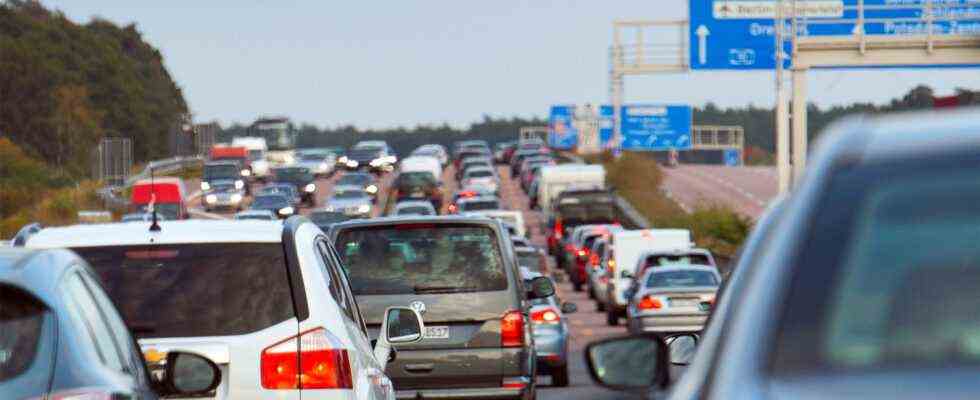Status: 07.12.2021 7:18 a.m.
In 2020, Corona caused traffic to collapse. But in the current year, the break for commuters is already over, as an analysis shows. Munich residents are hardest hit.
German commuters are again losing significantly more time in traffic jams. An analysis by the traffic data provider Inrix showed an extrapolated 40 hours of time lost for typical car commuters in 2021 in the German cities examined. That is 14 hours more than in 2020, as the company announced. Last year, Corona slowed the flow of commuters, now traffic has increased again and the loss of time is almost as high as it was before the pandemic.
Munich hardest hit
In 2019 it was an average of 46 hours. By far the worst hit is car-driving commuters in Munich: extrapolated over the year, they lost an average of 79 hours due to traffic jams on the way to work – more than three days. However, that’s still seven hours less than before Corona.
Berlin follows in second place with 65 hours. Only one hour is missing from the pre-crisis traffic jam. Hamburg ranks third with 47 hours. Behind it, the gaps become significantly smaller. Potsdam (46 hours), Pforzheim (44), Düsseldorf (43), Cologne (42) as well as Nuremberg, Dresden and Münster each with a loss of 41 hours follow in place four to ten.
Traffic jam rankings “somewhat problematic”
The traffic data provider Inrix sells traffic analysis and services for connected cars to administrations and companies. The bigger the congestion problem appears, the better its business prospects are. In its summer traffic jam analysis, the ADAC had also recently identified a massive increase in traffic jams.
Traffic experts see such traffic jam rankings with mixed feelings: Justin Geistefeldt, Professor of Transportation at the Ruhr University Bochum, finds the current rankings basically “somewhat problematic” because they do not sufficiently take into account the particularities of the individual cities. “The topography, the transport network structure and, above all, the commuter networks in the cities under review are only comparable to a limited extent,” he says. Nevertheless, the studies provided certain indications. “There is hardly a better database to evaluate the traffic jam.”
Even short journeys to work by car
According to the Federal Statistical Office, commuters also most frequently use the car for short journeys to work. In 2020, 40 percent of them said that they normally drive a car for distances of less than five kilometers. For distances between five and ten kilometers, the proportion was significantly higher at 69 percent.
26 percent of commuters use bicycles on journeys less than five kilometers to work. Distances between five and ten kilometers were covered by eleven percent by bike. Only eight percent of commuters traveled by bus, train or tram on routes less than five kilometers. On journeys between five and ten kilometers to work, it was 18 percent. Almost half of all commuters say they have to travel less than ten kilometers to their place of work. For 27 percent, the workplace is even less than five kilometers away.

